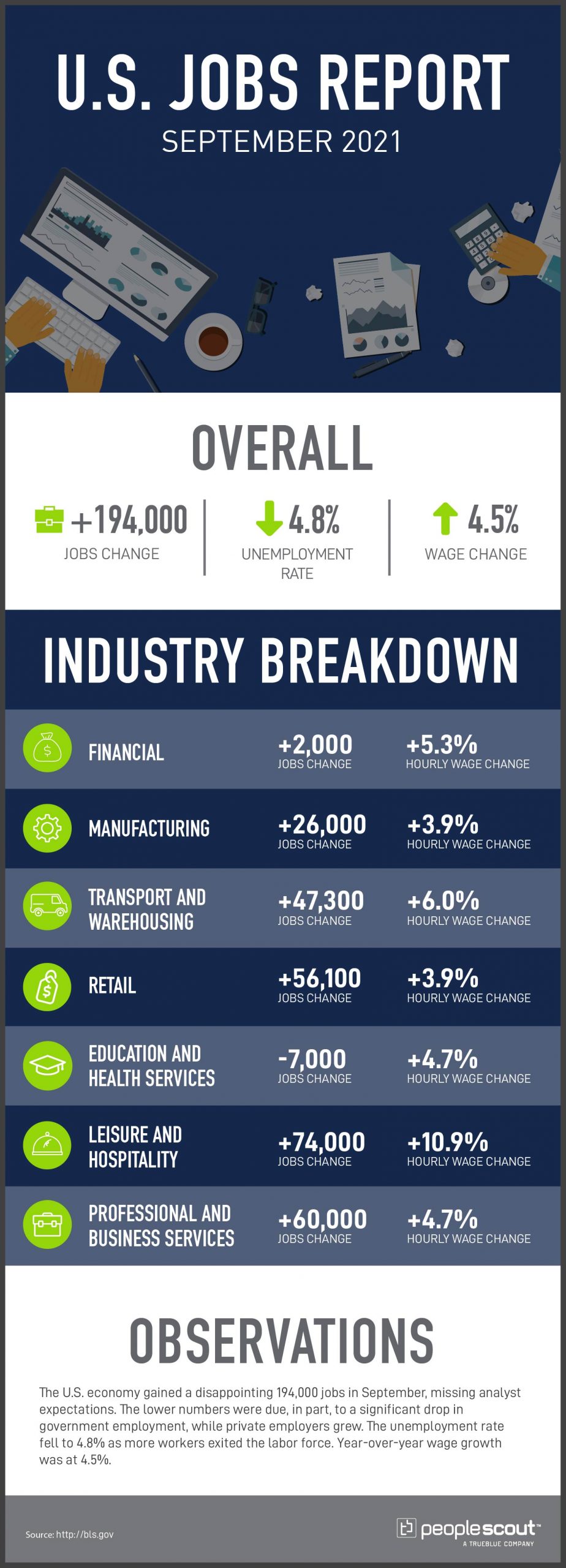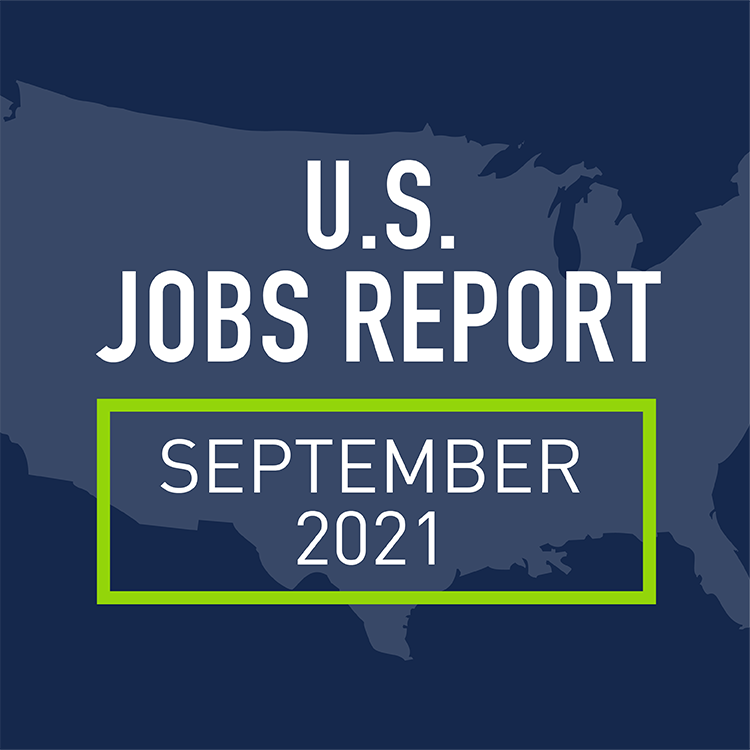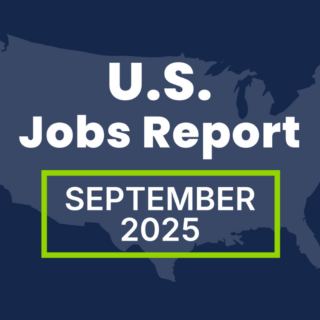The U.S. economy gained a disappointing 194,000 jobs in September, missing analyst expectations. The lower numbers were due, in part, to a significant drop in government employment, while private employers grew. The unemployment rate fell to 4.8% as more workers exited the labor force. Year-over-year wage growth was at 4.5%.

The Numbers
194,000: The U.S. economy added 194,000 jobs in September.
4.8%: The unemployment rate fell to 4.8%.
4.5%: Wages rose 4.5% over the past year.
The Good
Though the 194,000 jobs added to the U.S. economy demonstrate slowing job growth, the private sector is faring better than the headline numbers suggest. According to CNBC and the New York Times, the 194,000 figure appears worse because of a 123,000 job decline in government work, including a 180,000 job decline in education. The decline in education jobs can be attributed, in part, to a seasonal adjustment that occurs each year in September and doesn’t necessarily represent recent job losses. In September, private payrolls increased by 317,000, and the estimates for July and August were adjusted up by 169,000 jobs combined.
The Bad
One headline number in September is worse than it initially appears: the falling unemployment rate. The rate fell from August’s 5.2% to 4.8%, but that drop came largely because 183,000 people left the labor force. According to MarketWatch, the labor participation rate of 61.1% is still two full points behind pre-pandemic levels.
The Unknown
The Wall Street Journal reports that economists are still waiting to see what will bring workers back into the labor force. Companies report difficulty filling roles, and wages are rising as much as 10.9% year-over-year in some sectors, suggesting a tight labor market. Economists had predicted more people to reenter the labor force in the fall as students returned to school and enhanced unemployment benefits ran out. So far, it hasn’t been enough.




